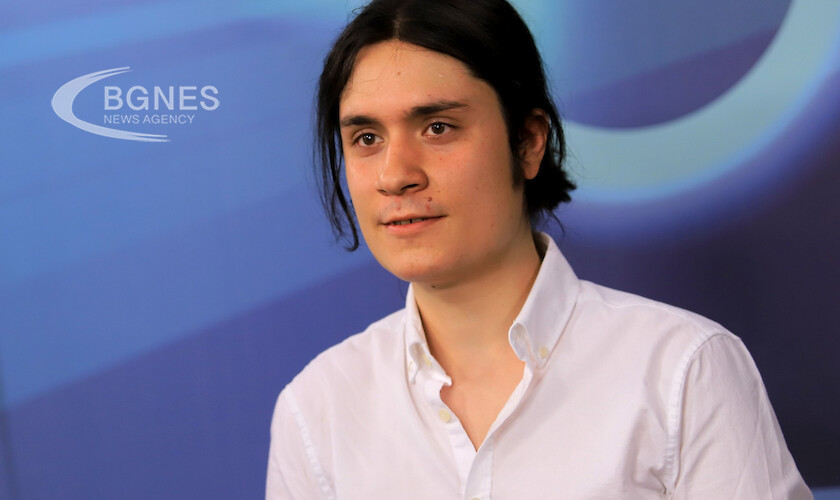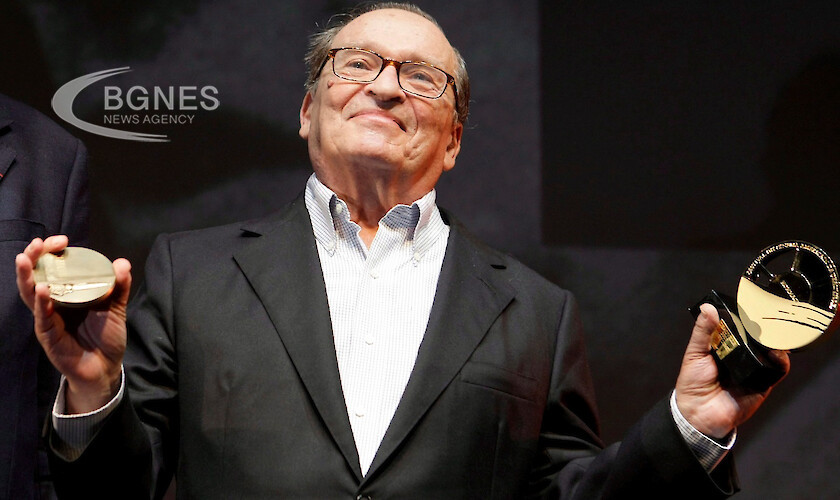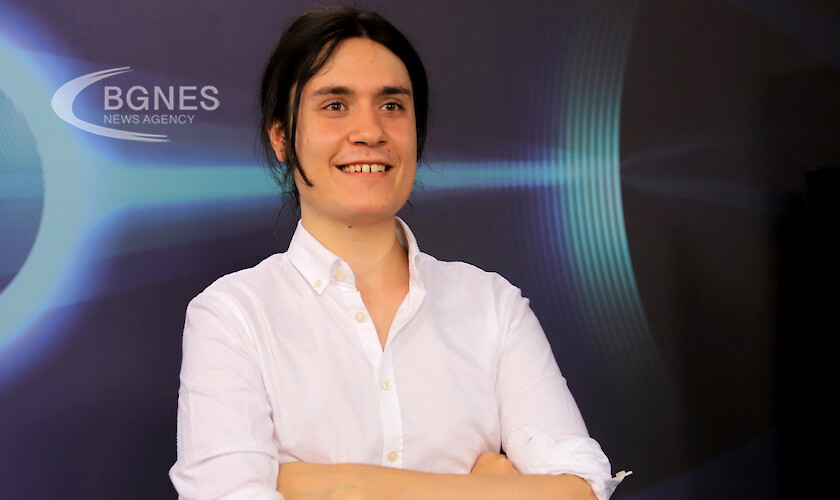Ivan Sariev: Sydney Lumet's timeless classic "Twelve Angry Men"
"12 Angry Men” (1957) directed by Sydney Lumet is an adaptation of a television play that came out 3 years ago. There is another American adaptation that came out in 1997 and a few international versions are made from Germany to China. And yet this version stands as the most widely watched one.The main idea of the movie to shows us is that the jury's role is not to prove whether the defendant of a crime is guilty or completely innocent, but to prove whether they are guilty or if there is "a reasonable doubt" to think that the evidence does not support the defendant being guilty of a crime.

This movie only focuses on the 12 jurors reaching to the conclusion that there is “a reasonable doubt”. By the end we do not get any sort of twist if the defendant was guilty all along. And it is not certain that the defendant is innocent. Only through strong arguments and examining the evidence do they reach the conclusion that there is "a reasonable doubt". Not trying to find out for real if the kid is guilty or innocent.The movie has a simple plot. It starts as a judge, who looks bored from the trial, says to the jury of 12 that they must decide if the kid is guilty or not guilty. And that the kid will be executed if they think he is guilty. We get a panning shot of the 12 jurors who we will follow. We will not get the names of the jurors (besides 2 at the very end) so as a viewer you have to remember them by their number. The panning shot also shows who are clearly paying attention to what thejudge is saying, who are not, and the angry expression of juror 3 gives at the kid, which hints at the final reveal about why he thinks the kid is guilty. And so, the 12 jurors enter their room and are left undisturbed till they reach their final conclusion on the situation. At first 11 of the jurors declare they think the kid is guilty, with juror 8, who is our protagonist, being the only one who thinks the kid is not guilty. From there a whole discussion arises around the trial and putting into question the reasons and evidence the other 11 jurors think the kid to be guilty.The kid, who grew up in the slums, is being tried at court for the murder of his father. We get evidence from the knife that was used in the murder to eyewitness evidence to support the idea that he is guilty. The put into question the kid’s memory of recalling events from the day of his father’s death. All the evidence, questions and potential prejudices related to this trial are explored in the movie. It does not feel like anything has been left out.The movie being just over 90 minutes long is carried by the dialog that these 12 men have.

Each of them has a distinctive tone and way of speaking that makes it easy to follow who is talking at any given moment. All of them have a distinctive body language when they are the ones talking or moving around the room. And all of them have a distinctive personality that reveals in how they to act in the room and how they talk about the defendant. Their backgrounds also inform us as to why they act in those ways. All of this is complimented through the cinematography, which helps inform the viewer who is taking charge in a scene and to feel the tension in the room. 12 different men who clash in arguments until they reach their final conclusion. From the start we get a good idea about how serious our protagonist, juror 8, is about the trial compared to anyone else at the start of the movie. As I mentioned the other 11 already think the kid is guilty, but juror 8 took upon himself to question one of the pieces of evidence that being the knife that was used to kill the father. It was explained that knife is unique due to its curve. But juror 8 broke the law and to findexactly the sameknife in a pawn shop. It is never brought up again that he broke the law to disprove that piece of evidence, because it is not important to the story. The point is that he would go that far to see if the kid is guilty or not guilty. And from this he manages to convince juror 9 to change his vote and from there they start convincing the others that the kid is not guilty.

Even though the movie is not long we get enough time to explore each of 12 jurors. Visibly the oldest man in the room, juror 9, from the beginning is noticeably quietand quite easy to miss that he is in theroom full of the character of the other 11 men exude. The first time he speaks up during the discussion is to declare that he voted not guilty both jurors 7 and 10 do not want to listen to his reasons. But by the end of the movie, he can start an argumentthat draws all the attention on him, and he does not let anyone misunderstand what he is saying and in turn to the attention he receives he gets the opportunity to point out a piece of evidence everyone overlooked. And then we have juror 7, who is only interested about the ball game he wants to get to after the final conclusionby the jury is made, so he wants the final conclusion to be decided quickly. He treats the entire argument that is happening right in front of him as nothing important and would prefer to just whistle or to fold paper-airplanes. He does not care if he votes for guilty or not guilty. Near the end he changes his vote to not guilty, but he is stopped by juror 11 affirm his statement on the kid not being guilty but he does not seem to give an affirmative answer. And that goes with all the other 10 men. They might not all get the same amount of screen time (jurors 2 and 6 come to mind as having the least) we still get a good idea of who they all are. The dialogue between the characters isbeautifully written. From a short exchange between juror 11 and juror 12 we get a hint that juror 11 is likely an immigrant from Europe, which helps explain his accent. To juror 1 opening up to juror 8 about what his work is, who up until this point has only cared about trying to coordinate the 12 men to discuss the case and never to get close with them.

There are also joke lines of dialogue which I do not think detract the dramatic and serious tone of the movie. For instance, we have 11 of the men to remove their coats throughout the film as it is a hot day outside. But juror 4 does not do that and does not visibly sweat. This prompts juror 5 to ask him if he ever sweats, but juror 4 gives an affirmative “no”. And this short line has a pay off when juror 8 starts questioning juror 4’s firm belief on reliable memory during stressful scenes. Juror 4 gets convinced that he was wrong to think one can recall memory reliably during an emotional moment and we get close of shot of his head as a small drop of sweat startsfalling. It works as both a payoff to the joke like of dialogue and a payoff to now seeing juror 4, who at that point was immovable from his stance that the kid is guilty, retract a previously held belief about the trial.The movie only has a single pieceof music that plays during emotional high points of the moviewhen the characters are not talking. That is also my biggest complaint with the movie. It feels like it needs this single piece at certain points of the narrative to make us have an emotional reaction when the acting in quiet moments, when the rest of the movie is filled with dialogued, would have sufficed. It does appear in a couple of scenes, so it is a minor complaint in relation to the rest of the movie.When that music does not play, your ears are focused on the characters and what they are saying and how they are saying it. The 12 distinct voices from tone to accent do not clash and so you can tell who is talking without looking at the screen. I have heard there is the potential to watch this movie only by listening. I have not tried that myself, but each voice is easy to tell apartthat I can assume that is the case.The camera at the start is mostly above eye-level, on eye-level or seated down eye-level of the jury. That way it creates thefeeling that you are in the room. At times, the camera is panning from one juror to another as though taking a POV of someone in the room and you are shifting your attention to another juror who is going to talk in the room. As the movie progresses there is more cutting and shorter takes, close ups increase, and the camera moves to bellow eye-level during certain close ups. The cutting during the movie is fast and on purpose eye-catching especially during the debates. Sometimes making a snap cut to a close-up shot on a character to know that he is the one driving the conversation now. The beneath eye-level shots indicating to us that the person we are looking at is controlling the conversation. These all create together a feeling of tension as though you were also trapped in a hot room for a couple hours while debating this trial.There are a couple times when character break the fourth wall. For instance, at the start of the film juror 1 almost looks at the camera when saying to juror 8 at the start of the debate that “it is up to us to convince this gentleman that he’s wrong and we’re right”. It is as though juror 1 is speaking to us the audience that they will try to convince us that the kid is guilty. As though we have taken a POV of juror 8 with all eyeslooking at us. Near the end of the movie this is reversed. Juror 8 looks directly at the camera, when asking the 3 jurors that still think the kid is guilty about why they think that. This fourth wall break is juror 8 asking us the audience after watchingthem discuss for 80 minutes the trial if we can think of a reason to believe the kid is guilty. I should say more about the slum kid. The movie uses the kid coming from the slums as way to talk about on how a jury should consider a trial in relation to prejudice. That being that no past prejudices should hamper the final verdict. In the movie, juror 10 introduces the idea of how all the people from the slums are the same and that of course that kid killed his father, because "they all know that slum kidsare criminals by nature." There is no statement about whether the slum kid is a person of colour or not, but the dialog informs us that the argument can be read as someone framing a person of colour of being born to become a criminal. The kid gets no nameand the movie being black & white it is hard to discern whether the kid is white or not.

There is also juror 5, who is a white man, who also grew up in the slums. And that is the part of the point of the movie. It imagines a potential jury that will not say that a kid is guilty of murder because of their background or ethnicity and so the audience are not given a direct quote that tells them the kid’s race.The movie pushes this idea near the end with the scene where juror 10 is annoyed that 9 jurors think the kid is not guilty. He starts a racist rant that makes to all other jurors, including the ones who still think the slum kid was guilty, to stand up and move away out of shame from the horrid things the man is saying. The scene is complimented withthe camera moving back as well, as though we the viewers are also moving away from this man's rant. When juror 10 sits away from the main table on a separate desk, the camera starts moving back and focuses on juror 8 who gives a speech about how past prejudices can cloud one’s judgment of a situation. And that the 12 are here to examine the evidence and see if the kid guilty or if there is a reasonable doubt on that evidence and say the kid is not guilty. As I stated at the start, the jury, and by extension us the audience, are only here to find "a reasonable doubt" on whether someone is guilty or not.Before ending this review, I do want to mention the final scene, since it was the one that left the biggest emotional impact on me every time I watch it. It is when we see juror 3 crumble in tears after he realises that the only reason why he thought the slum kid murdered his father was because of his supressed anger towards his own son leaving him 2 years ago after a big fight. Throughout the movie we see him yell that the slum kid is guilty and that kids should respect their fathers. So, we had some suspicion that maybe he has some bias to think a kid might murder their father. That whole scene from him tearing the photo he has of his son and himself to juror 8 humbling him by helping him put on his coat is a great way to end this movie. /BGNES
----
Ivan Sariev, film critic




